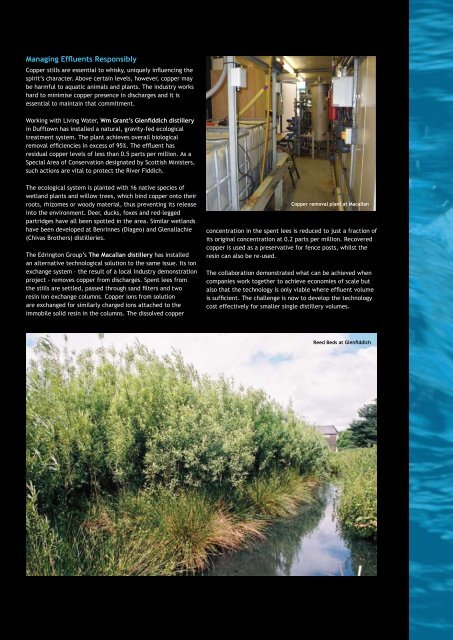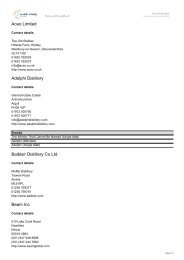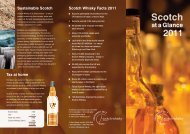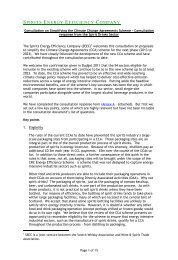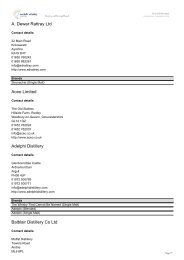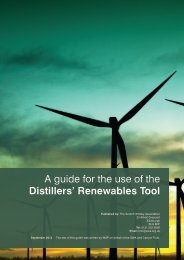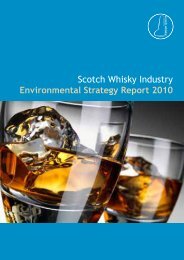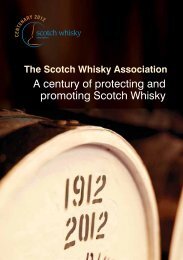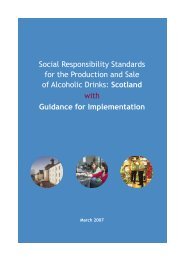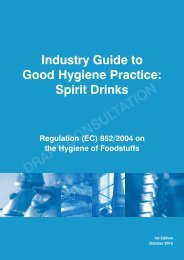Download the full case study - Scotch Whisky Association
Download the full case study - Scotch Whisky Association
Download the full case study - Scotch Whisky Association
You also want an ePaper? Increase the reach of your titles
YUMPU automatically turns print PDFs into web optimized ePapers that Google loves.
Managing Effluents ResponsiblyCopper stills are essential to whisky, uniquely influencing <strong>the</strong>spirit’s character. Above certain levels, however, copper maybe harmful to aquatic animals and plants. The industry workshard to minimise copper presence in discharges and it isessential to maintain that commitment.Working with Living Water, Wm Grant’s Glenfiddich distilleryin Dufftown has installed a natural, gravity-fed ecologicaltreatment system. The plant achieves overall biologicalremoval efficiencies in excess of 95%. The effluent hasresidual copper levels of less than 0.5 parts per million. As aSpecial Area of Conservation designated by Scottish Ministers,such actions are vital to protect <strong>the</strong> River Fiddich.The ecological system is planted with 16 native species ofwetland plants and willow trees, which bind copper onto <strong>the</strong>irroots, rhizomes or woody material, thus preventing its releaseinto <strong>the</strong> environment. Deer, ducks, foxes and red-leggedpartridges have all been spotted in <strong>the</strong> area. Similar wetlandshave been developed at Benrinnes (Diageo) and Glenallachie(Chivas Bro<strong>the</strong>rs) distilleries.The Edrington Group’s The Macallan distillery has installedan alternative technological solution to <strong>the</strong> same issue. Its ionexchange system – <strong>the</strong> result of a local industry demonstrationproject - removes copper from discharges. Spent lees from<strong>the</strong> stills are settled, passed through sand filters and tworesin ion exchange columns. Copper ions from solutionare exchanged for similarly charged ions attached to <strong>the</strong>immobile solid resin in <strong>the</strong> columns. The dissolved copperCopper removal plant at Macallanconcentration in <strong>the</strong> spent lees is reduced to just a fraction ofits original concentration at 0.2 parts per million. Recoveredcopper is used as a preservative for fence posts, whilst <strong>the</strong>resin can also be re-used.The collaboration demonstrated what can be achieved whencompanies work toge<strong>the</strong>r to achieve economies of scale butalso that <strong>the</strong> technology is only viable where effluent volumeis sufficient. The challenge is now to develop <strong>the</strong> technologycost effectively for smaller single distillery volumes.Reed Beds at Glenfiddich


